- 43 Posts
- 17 Comments
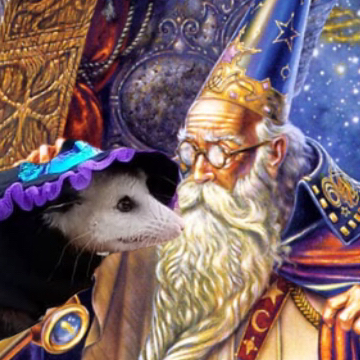
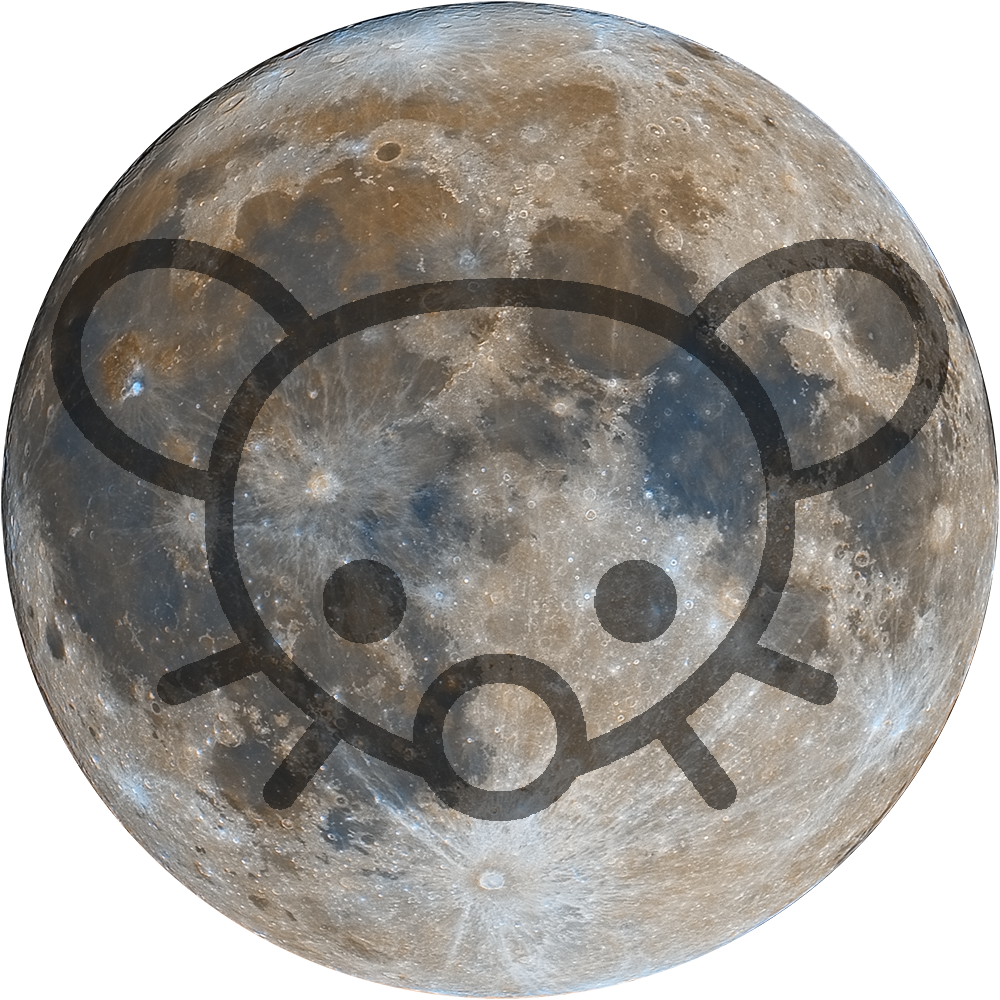 1·9 months ago
1·9 months agoA bunch of dust blocking some of the light

 2·9 months ago
2·9 months agoDefinitely one of the cooler looking galaxies out there! I probably should’ve shot this from darker skies to help bring out the fainter outer arms of the galaxy. Can only push them so far in processing before the background gets too noisy. There’s also a number of background galaxies in the uncropped image. Captured over 4 nights in March/April, 2022 from a Bortle 6 Zone
Places where I host my other images:
-
TPO 6" F/4 Imaging Newtonian
-
Orion Sirius EQ-G
-
ZWO ASI1600MM-Pro
-
Skywatcher Quattro Coma Corrector
-
ZWO EFW 8x1.25"/31mm
-
Astronomik LRGB+CLS Filters- 31mm
-
Astrodon 31mm Ha 5nm, Oiii 3nm, Sii 5nm
-
Agena 50mm Deluxe Straight-Through Guide Scope
-
ZWO ASI-290mc for guiding
-
Moonlite Autofocuser
Acquisition: 16 hours 8 minutes (Camera at -15°C, unity gain)
-
L - 251x120"
-
R - 78x120"
-
G - 79x120"
-
B - 76x120"
-
Darks- 30
-
Flats- 30 per filter
Capture Software:
- Captured using N.I.N.A. and PHD2 for guiding and dithering.
PixInsight Preprocessing:
-
BatchPreProcessing
-
StarAlignment
-
ImageIntegration per channel per panel
-
DrizzleIntegration (2x, Var β=1.5)
-
StarAlign to new Ha and Oiii stacks
-
Dynamic Crop
-
DynamicBackgroundExtraction 2x
Luminance Linear:
-
BlurXterminator
-
NoiseXterminator
-
ArcsinhStretch + HistogramTransformation to stretch to nonlinear
RGB Linear:
-
ChannelCombination
-
SpectrophotometricColorCalibration
-
Slight SCNR Green
-
HSV repair
-
ArcsinhStretch + HistogramTransformation to stretch to nonlinear
-
LRGBCombination with stretched luminance as L
-
Invert > SCNR > invert to remove magentas from some stars
-
shitloads of curve adjustments for lightness, contrast, hue, saturation, etc (with varying lum/star masks)
-
LocalHistogramEqualization
-
MLT for chrominance noise reduction
-
more curves
-
BlurXterminator for star sharpening
-
even more curves
-
Resample to 70%
-
DynamicCrop in on just the galaxy
-
Annotation
-
always like seeing these narrowband(ish) palettes come out of osc cams!
This is a photo from a lunar transit of the space station a few years ago. I had another telescope setup to take a video of the pass, and here’s a composite of the frames it took (the whole thing lasted less than a second).
I really enjoy the scale of this image, with the ISS being 540km away, and the moon some 380,000km in the background. more detailed info on the ISS Transit ISS transit can be found here courtesy of transit-finder. Captured on the morning of June 24, 2019 about 30 minutes after sunrise.
-
Meade ETX125-EC
-
AW 71" Camera Tripod
-
Canon Rebel T3i (astro-modified)
-
Meade #64 adapter
Acquisition:
- 1/800" at ISO 800 single exposure
Capture:
- I just held down the shutter button a second before the ISS pass occurred, and got 3 frames containing the ISS
Processing:
-
AutoColor and Levels adjustments in Photoshop
-
MLT noise reduction and annotation in PixInsight
-

 81·9 months ago
81·9 months agoThey actually just got rid of the stars, now you just tip people
https://old.reddit.com/r/reddit/comments/16ryhv9/celebrating_great_content_is_as_good_as_gold/

 1·9 months ago
1·9 months agoThanks!

 2·9 months ago
2·9 months agoI shot the Owl Nebula (M97) a few months ago, and barely had the Surfboard galaxy (M108) in frame. Since I shot it in narrowband, I decided to combine it with some old data I shot back back in 2021 as there’s very little narrowband signal in the galaxy. So while M108 and the stars are true color, M98 in this pic is technically false color (although kinda close if you compare it to the 2021 pic. I think this does a great job of showing how much my processing has improved in the last 2 years, as the datasets for the galaxy and stars are identical. There’s also a number of faint background galaxies in the pic.
Narrowband images were shot from a bortle Bortle 9 zone in July 2023, and the boradband was from Bortle 6 in March 2021.
Places where I host my other images:
-
TPO 6" F/4 Imaging Newtonian
-
Orion Sirius EQ-G
-
ZWO ASI1600MM-Pro
-
Skywatcher Quattro Coma Corrector
-
ZWO EFW 8x1.25"/31mm
-
Astronomik LRGB+CLS Filters- 31mm
-
Astrodon 31mm Ha 5nm, Oiii 3nm, Sii 5nm
-
Agena 50mm Deluxe Straight-Through Guide Scope
-
ZWO ASI-290mc for guiding
-
Moonlite Autofocuser
Acquisition: 15 hours 38 minutes (Camera at -15°C, unity gain)
-
Ha - 43x360
-
L - 91x120"
-
R - 29x120"
-
G - 29x120"
-
B - 29x120"
-
Darks- 30
-
Flats- 30 per filter
Capture Software:
- Captured using N.I.N.A. and PHD2 for guiding and dithering.
PixInsight Preprocessing:
-
BatchPreProcessing
-
StarAlignment
-
ImageIntegration per channel per panel
-
DrizzleIntegration (2x, Var β=1.5)
-
StarAlign to new Ha and Oiii stacks
-
Dynamic Crop
-
DynamicBackgroundExtraction 2x
Luminance Linear:
-
BlurXterminator
-
NoiseXterminator
-
ArcsinhStretch + HistogramTransformation to stretch to nonlinear
Narrowband:
-
ArcsinhStretch + HistogramTransformation to stretch to nonlinear
-
PixelMath to combine Ha and Oiii images into bicolor pic (used /u/DreamsPlease’s formula)
R = iif(Ha > .15, Ha, (Ha*.8)+(Oiii*.2))G = iif(Ha > 0.5, 1-(1-Oiii)*(1-(Ha-0.5)), Oiii *(Ha+0.5))B = iif(Oiii > .1, Oiii, (Ha*.3)+(Oiii*.2))-
StarXterminator to completely remove stars
-
BackgroundNeutralization
-
Small stretches with HT
-
NoiseXterminator
-
Curve adjustments
RGB Linear:
-
SpectrophotometricColorCalibration
-
Slight SCNR Green
-
HSV repair
-
ArcsinhStretch + HistogramTransformation to stretch to nonlinear
-
LRGBCombination with stretched luminance as L
-
Various curve adjustments for lightness, contrast, hue, saturation, etc (with varying lum/star masks)
-
PixelMath to add narrowband (this really only affected/overlaid the Owl nebula on top, not touching the stars, galaxy, or background)
Max(RGB , Bicolor)-
NoiseXterminator
-
More curves
-
invert > SCNR > invert to remove magentas from the background
-
LocalHistogramEqualization (2 round of this at kernel 16 and 74 to affect different sized structures)
-
MLT/SCNR for chrominance noise reduction in the galaxy
-
DarkStructureEnhance
-
BlurXterminator for star sharpening
-
ColorSaturation
-
final curves
-
Resample to 70%
-
FastRotation
-
Annotation
-
Shot this back in the spring and forgot it was sitting unprocessed on my computer until now. This photo has had the saturation increased to highlight the differences in the lunar soil, which are barely noticeable to the eye when viewed through larger telescopes (usually in Mare Serenitatis or Mare Imbrium for me, at least). Tan/orange indicates iron rich minerals, and blue indicates titanium rich minerals. Captured at early in the morning on March 29th, 2023.
Places where I host my other images:
-
TPO 6" F/4 Imaging Newtonian
-
Orion Sirius EQ-G
-
ZWO ASI1600MM-Pro
-
Skywatcher Quattro Coma Corrector
-
ZWO EFW 8x1.25"/31mm
-
Astronomik LRGB+CLS Filters- 31mm
-
Astrodon 31mm Ha 5nm, Oiii 3nm, Sii 5nm
-
Agena 50mm Deluxe Straight-Through Guide Scope
-
ZWO ASI-120MC for guiding
-
Moonlite Autofocuser
Acquisition: (Camera at Unity Gain, -15°C)
-
R - 1000 x 2.5ms
-
G - 1000 x 2.2ms
-
B - 1000 x 3.6ms
Capture Software:
- Captured using Sharpcap and N.I.N.A. for mount/filterwheel control
Stacking:
- Stacked the best 15% of frames in Autostakkert (autosharpened, 3X Drizzle)
PixInsight Processing:
-
DynamicCrop
-
ChannelCombination to combine monochrome images into RGB image
-
ChannelMatch to align G and B colorchannels to red
-
ColorCalibration
-
HistogramTransformation (slight stretch, also applied to red stack)
-
LRGBCombination using red stack as luminance
-
CurvesTransformations to adjust lightness, contrast, colors, saturation, etc.
-
SCNR green (a little)> invert > SCNR (a lot) > invert
-
ColorSaturation to desaturatered color fringing around some of the craters
-
UnsharpMask for additional sharpening
-
LocalHistogramTransformation
-
MLT noise reduction
-
more curves
-
Annotation
-

 1·10 months ago
1·10 months agoVdB 152 is technically just one part at the end of the dark nebula, and there are a number of other cataloged structures in this image. Captured from August 16-25, 2023. Broadband data from a Bortle 3 zone (Deerlick astronomy village), Ha from Bortle 9.
Places where I host my other images:
-
TPO 6" F/4 Imaging Newtonian
-
Orion Sirius EQ-G
-
ZWO ASI1600MM-Pro
-
Skywatcher Quattro Coma Corrector
-
ZWO EFW 8x1.25"/31mm
-
Astronomik LRGB+CLS Filters- 31mm
-
Astrodon 31mm Ha 5nm, Oiii 3nm, Sii 5nm
-
Agena 50mm Deluxe Straight-Through Guide Scope
-
ZWO ASI-290mc for guiding
-
Moonlite Autofocuser
Acquisition: 30 hours 15 minutes (Camera at -15°C)
BB exposures at half unity gain (76/15), Ha at unity gain (139/21)
-
Ha - 102x600"
-
L - 200x120"
-
R - 70x120"
-
G - 70x120"
-
B - 68x120"
-
Darks- 30
-
Flats- 30 per filter
Capture Software:
- Captured using N.I.N.A. and PHD2 for guiding and dithering.
PixInsight Preprocessing:
-
BatchPreProcessing
-
StarAlignment
-
ImageIntegration per channel per panel
-
DrizzleIntegration (2x, Var β=1.5)
-
Dynamic Crop
-
DynamicBackgroundExtraction
Luminance Linear:
-
BlurXterminator
-
NoiseXterminator
-
ArcsinhStretch + HistogramTransformation to stretch to nonlinear
Ha Linear:
These steps largely follow the ones in NightPhoton’s advanced narrowband combination guide.
-
Combine Ha with Red channel (HRR palette)
-
BackgroundNeutralization
-
ColorCalibration
-
StarXterminator to completely remove stars
-
PixelMath to subtract red continuum spectrum, leaving just Ha signal
-
HistogramTransformation to stretch nonlinear
-
NoiseXterminator + a little concolution
-
CurvesTransformation to adjust black point/contrast
differing from the guide above, the background was a dark gray rather than clipped to black since this is more faint structure addition than bright structure
RGB Linear:
-
SpectrophotometricColorCalibration
-
Slight SCNR Green
-
HSV repair
-
ArcsinhStretch + HistogramTransformation to stretch to nonlinear
duplicate stars only was made and stretched to nonlinear using a less aggressive arcsin+HT for star addition later
Nonlinear Processing:
-
Various curve adjustments for lightness, contrast, hue, saturation, etc (with varying lum/star masks)
-
LRGBCombination using stretched L as luminance
-
DeepSNR
-
More curves
-
PixelMath to add stretched Ha per the advanced narrowband guide above
-
BlurXterminator for star reduction
Next few steps kinda follow along with this independent starless processing tutorial for manually combining stars via re-linearization
-
StarXterminator
-
HistogramTransformation to unstretch (also applied to duplicate stars early image from earlier)
-
PixelMath to combine starless + stars only images
-
HT to stretch everything back to nonlinear
-
MultiscaleLinearTransform for chrominance noise reduction
-
LocalHistogramEqualization (2 rounds of this at scales 68 and 384 with lum masks)
-
ColorSaturation to selectively saturate reds
-
Even more curves
-
Resample to 70%
-
Annotation
-
Went out to a darksite and tried snapping some milky way pics with my DSLR while the main telescope was doing its thing. The three brightest stars in the image (Vega, Altair, and Deneb) make up the 3 points of the Summer Triangle. There’s also a ton of deep sky objects in this part of the sky, including all of these that I’ve photographed before. Captured on July 18th, 2023 from the Deerlick Astronomy Village (bortle 3 zone)
Places where I host my other images:
Equipment:
-
Canon T3i (astro-modded)
-
Tamron 17-50mm lens
-
Joby 3K tripod planted firmly on top of a RAV4
Acquisition: 3.5 minutes (17mm f/2.8 ISO 800)
-
14x15"
-
Darks- 10
Capture Software:
- Captured using my finger on the shutter button
PixInsight Processing
-
BatchPreProcessing
-
StarAlignment
-
Blink
-
ImageIntegration
-
DrizzleIntegration (2x, var β=1.5)
-
DynamicCrop to remove blurred trees at the bottom
-
DynamicBackgroundExtraction
-
SpectroPhotometricColorCalibration
-
SCNR green
-
NoiseXTerminator
-
ArcsinhStretch + HT to stretch nonlinear
-
Slight SCNR green
-
Shitloads of curves to adjust lightness, saturation, contrast etc with varying luminance/star masks
-
MLT chrominance noise reduction
-
NoiseXTerminator
-
LocalHistogramEqualization
-
DarkStructureEnhance
-
more curves
-
Resample to 60%
-
Annotation
-
Went out to a darksite and tried snapping some milky way pics with my DSLR while the main telescope rig was doing its thing. Pretty pleased with how this turned out since I don’t really do widefield imaging, and it’s only 5 minutes of total exposure time (yes I know the stars are trailed 15" exposures were too long in hindsight). The milky way core is home to many different deep sky objects, including all of these that I’ve shot before, and a bunch more that I haven’t photographed yet. Captured on July 18th, 2023 from the Deerlick Astronomy Village (bortle 3 zone)
Places where I host my other images:
Equipment:
-
Canon T3i (astro-modded)
-
Tamron 17-50mm lens
-
Joby 3K tripod planted firmly on top of a RAV4
Acquisition: 5 minutes (17mm f/2.8 ISO 800)
-
20x15"
-
Darks- 10
Capture Software:
- Captured using my finger on the shutter button
PixInsight Processing
-
BatchPreProcessing
-
StarAlignment
-
ImageIntegration
-
DrizzleIntegration (2x, var β=1.5)
-
DynamicCrop to remove blurred trees at the bottom
-
DynamicBackgroundExtraction
-
SpectroPhotometricColorCalibration
-
SCNR green
-
ArcsinhStretch + HT to stretch nonlinear
-
Shitloads of curves to adjust lightness, saturation, contrast etc with varying luminance/star masks
-
MMT for large scale chrominance noise reduction
-
NoiseXTerminator
-
Invert > SCNR >invert > SCNR to remove excess green and magentas
-
more curves
-
DarkStructureEnhance
-
LocalHistogramEqualization
-
EZ Star reduction
-
NoiseGenerator to add noise back into star reduced areas
-
DynamicCrop again
-
Resample to 60%
-
Annotation
-

 1·10 months ago
1·10 months agoI shot this mostly just to have a true color photo of M52, since my last go at it in 2019 was done in narrowband, with typical ugly narrowband stars. Captured on July 18th, 2023 from the Deerlick Astronomy Village (bortle 3 zone)
Places where I host my other images:
-
TPO 6" F/4 Imaging Newtonian
-
Orion Sirius EQ-G
-
ZWO ASI1600MM-Pro
-
Skywatcher Quattro Coma Corrector
-
ZWO EFW 8x1.25"/31mm
-
Astronomik LRGB+CLS Filters- 31mm
-
Astrodon 31mm Ha 5nm, Oiii 3nm, Sii 5nm
-
Agena 50mm Deluxe Straight-Through Guide Scope
-
ZWO ASI-290mc for guiding
-
Moonlite Autofocuser
Acquisition: 2 hours 2 minutes (Camera at half Unity Gain, -15°C)
-
L- 30x120"
-
R - 11x120"
-
G - 10x120"
-
B - 10x120"
-
Darks- 30
-
Flats- 30 per filter
Capture Software:
- Captured using N.I.N.A. and PHD2 for guiding and dithering.
PixInsight Processing
-
BatchPreProcessing
-
StarAlignment
-
ImageIntegration
-
DrizzleIntegration (2x, var β=1.5)
Luminance Linear:
-
DynamicCrop
-
DynamicBackgroundExtraction
-
BlurXTerminator
-
NoiseXterminator
-
ArcsinhStretch+HistogramTransformation to bring nonlinear
RGB Linear:
-
DynamicCrop
-
DynamicBackgroundExtraction
-
ChannelCombination
-
SpectrophotometricColorCalibration
-
HSV Repair
-
Slight SCNR green
-
DeepSNR
-
AcrsinhStretch + HistogramTransformation to stretch nonlinear
Nonlinear:
-
added stretched luminance to stretched RGB via LRGBCombination
-
shitloads of CurveTransformations to adjust hue, lightness, saturation, etc. (some with lum masks)
-
DeepSNR
-
MLT Chrominance noise reduction
-
LocalHistogramTransformation
-
more curves
-
SCNR
-
BlurX for star reduction
-
even more curves
-
Resample to 60%
-
annotation
-

 2·11 months ago
2·11 months agoWhat did you use to photograph and process this?

 2·11 months ago
2·11 months agoIt’s not actually that redshifted. It just looks that way because I combined the Ha stack into the red channel in addition to using it as luminance

 4·11 months ago
4·11 months agoAlright this thing is stupid faint. Due to my apartment’s wonderful horizons and high light pollution I decided to photograph a lot of high declination narrowband targets. This one just happened to be in a region of the sky while I was in between shooting brighter things. I only noticed it when scanning through stellarium with the DSS red survey on. There is apparently some Oiii in it based on the few other photos online, but this would have been too challenging (and time consuming) for me to do from bortle 8. There are also a few background galaxies.
Captured over 24 nights from Jan-April 2023.
Places where I host my other images:
-
TPO 6" F/4 Imaging Newtonian
-
Orion Sirius EQ-G
-
ZWO ASI1600MM-Pro
-
Skywatcher Quattro Coma Corrector
-
ZWO EFW 8x1.25"/31mm
-
Astronomik LRGB+CLS Filters- 31mm
-
Astrodon 31mm Ha 5nm, Oiii 3nm, Sii 5nm
-
Agena 50mm Deluxe Straight-Through Guide Scope
-
ZWO ASI-120mc for guiding
-
Moonlite Autofocuser
Acquisition: 65 hours 30 minutes (Camera at half Unity Gain, -15°C)
-
Ha - 383x600"
-
R - 35x60"
-
G - 35x60"
-
B - 30x60"
-
Darks- 30
-
Flats- 30 per filter
Capture Software:
- Captured using N.I.N.A. and PHD2 for guiding and dithering.
PixInsight Processing
-
BatchPreProcessing
-
StarAlignment
-
ImageIntegration
-
DrizzleIntegration (2x, Var β=1.5)
Ha Linear:
-
DynamicCrop
-
DynamicBackgroundExtraction
-
NoiseXterminator
-
MaskedStretch to 0.1 background
-
StarXTerminator starmask made, then subtracted from 0.3 Gray image and colvolved
-
Previous image used as a mask to stretch nebulosity without stretching stars
-
Repeated previous steps a few times to bring Ha and Oiii images nonlinear
RGB Linear:
-
DynamicCrop
-
DynamicBackgroundExtraction
-
ChannelCombination
-
JimmyMath to add Ha to RGB image
Math is just the last equation in Jimmy’s wonderful narrowband combination guide, although I bumped the R variable up to 4.0
-
SpectrophotometricColorCalibration
-
HSV Repair
-
DeepSNR
-
Slight SCNR green
-
AcrsinhStretch + HistogramTransformation to stretch nonlinear
Nonlinear:
-
added stretched Ha to stretched RGB via LRGBCombination
-
DeepSNR
-
shitloads of CurveTransformations to adjust hue, lightness, saturation, etc. (some with lum masks)
-
MLT chrominance noise reduction
-
ColorSaturation to selectively saturate the nebula
-
more curves
-
LocalHistogramTransformation
-
even more curves
-
Invert > SCNR > invert > SCRN (star masked) to remove excess greens and magentas from stars
-
guess what more curves
-
BlurX to sharpen up the stars
-
another round of MLT noise reduction (targeted at medium scale chrominance noise in the nebula)
-
Resample to 70%
-
DynamicCrop again
-
annotation
-
But if a plug but !astrophotography@lemmy.world if you like space pics taken by amateurs
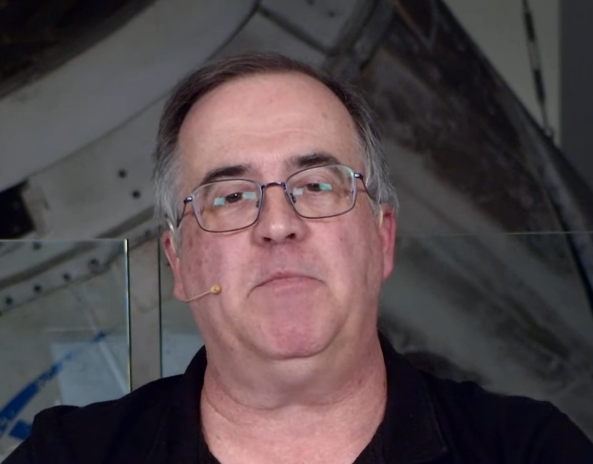
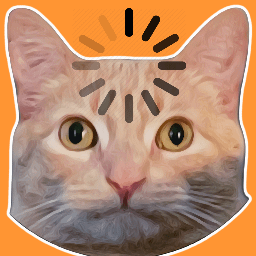
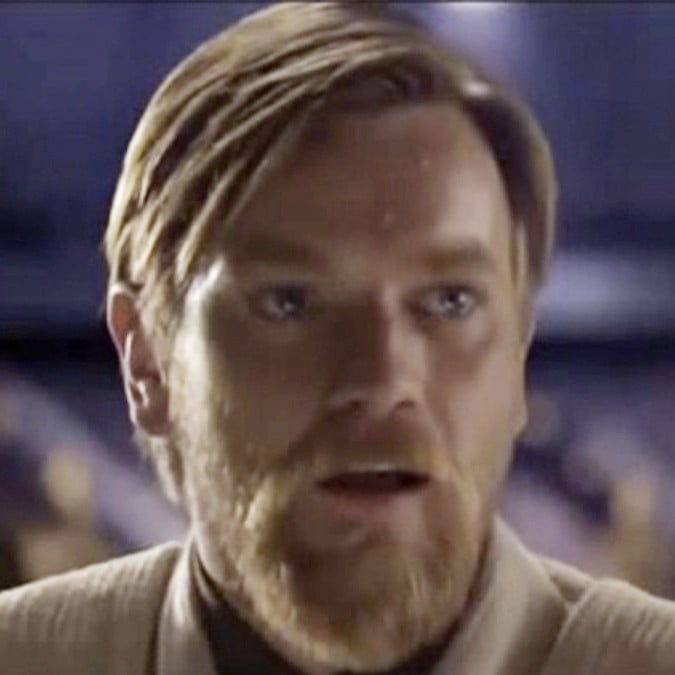



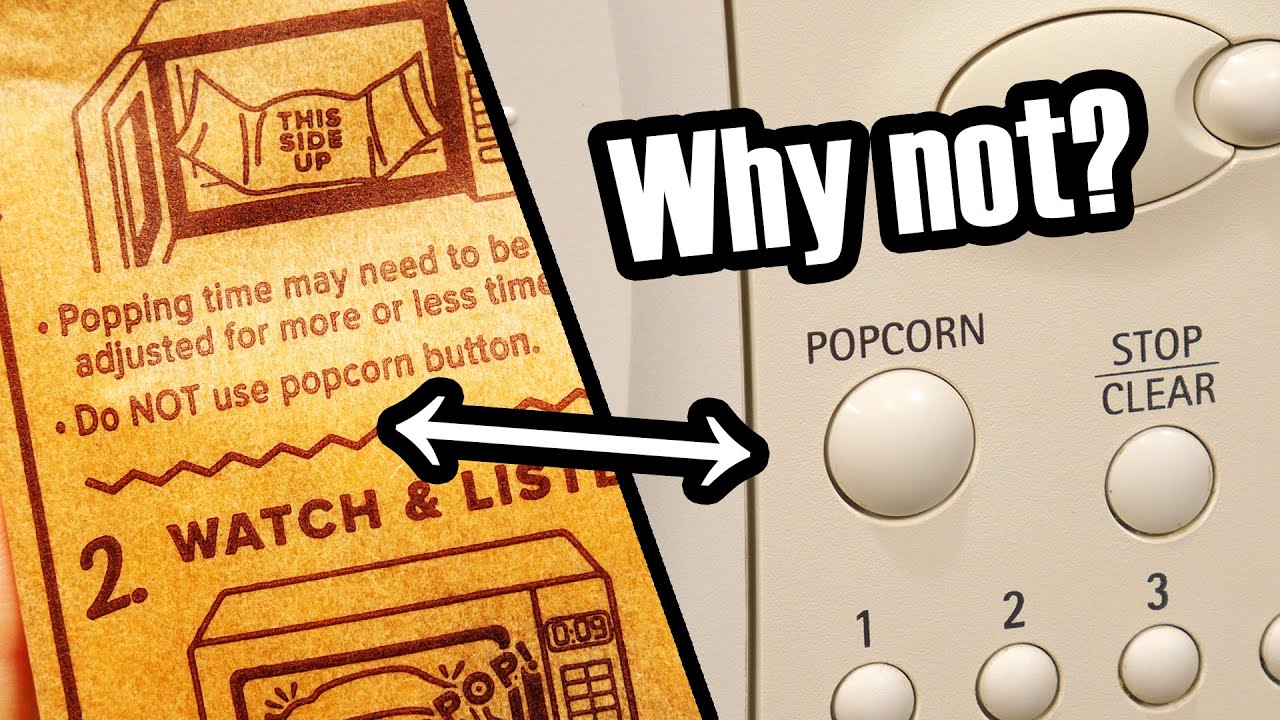


Kinda as a joke I designed a house for astrophotography in sweethome 3D. You can also export the whole 3D house model into unity and upload it to VRChat to actually walk around inside it
https://youtu.be/Gco_OVsT3Wo